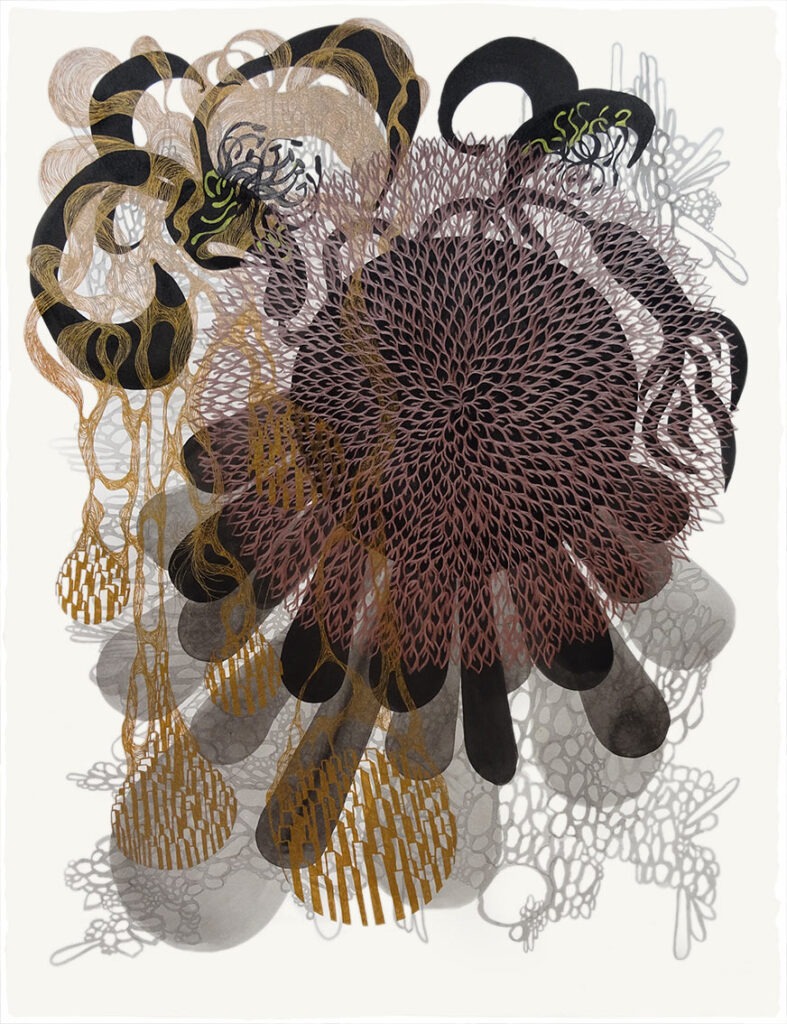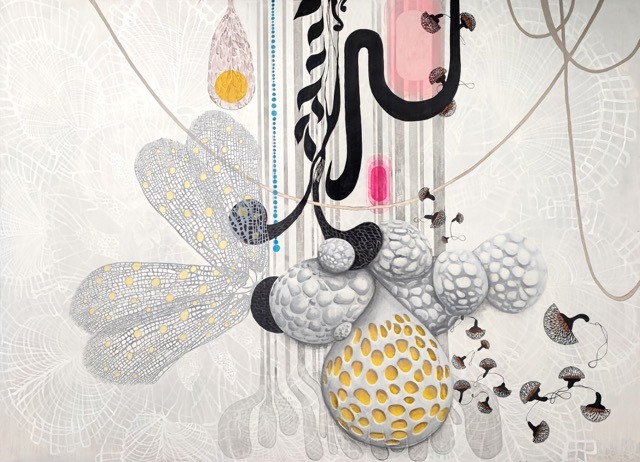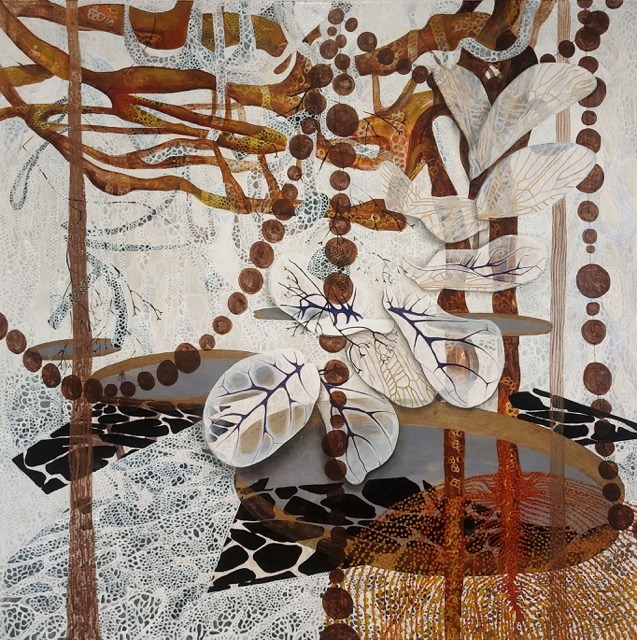The Amazon has always been present in the work of visual artist Adriana Ramalho, even when she lived away from the region. Her abstract canvases make details of organic shapes invisible to the naked eye gigantic, and suggest the contrasts between the colors of waters and drought, degradation and preservation.
Since she was invited at the age of 17 to be an illustrator for newspaper Amazonas em Tempo, the artist has never considered doing anything aside from working with creation. Choosing a higher education program, however, was challenging. There were no fine arts schools in Manaus, which made her choose advertising. Unhappy about her choice, she sought an Art Education undergraduate program, but the school ended the course before she could complete it.
Faced with such frustrating experiences, Adriana accepted her mother’s suggestion and moved to São Paulo (SP) to study Fine Arts, her biggest dream. Accustomed to permanent contact with nature (her family’s farm in Manaus is just a few kilometers away from the dense forest), her arrival in São Paulo metropolis was shocking, particularly due to the radical verticalization of the landscape.
The fact that she moved to São Paulo awakened her interest in digital media, in particular video installations, which allowed the abstraction of vertical forms and facilitated large formats. Somehow, the perception of the contrast between São Paulo and Manaus, the sounds of the city and the forest, and the overlapping of such landscape elements gave meaning to her work.
As soon as she graduated, Adriana went on to design and technology graduate school. In order to fund her stay in São Paulo, she started working in advertising and marketing. Immersed in the intense routine of the industry from 2010 to 2016, the Manaus artist found herself further and further away from artistic creation.
Tired of the frantic city life, she decided to move to the rural area of Ubatuba, on the coast of São Paulo state. As she moved to the middle of the Atlantic Forest, just a few kilometers from the sea, the artist was able to reconnect with herself and the world of art. She says she embraced the place “tooth and nail”. With no internet connection, a telephone or any other electronic equipment, she was finally able to get back to drawing.
Initially, her work preserved many urban elements. Little by little, the lines began to turn towards organic forms, as in work “Garden One”:

From then on, the abstract form gained more expression in her work, increasingly directed towards nature, influenced by the landscapes she began to coexist with. Thus, her repertoire grew and became an abstraction of these landscapes:

Another persistent and important element in Adriana Ramalho’s work is the effort to make manifest what cannot be seen with the naked eye, but is present in the landscape. By highlighting this information, she builds other “countries”, experiences and sensibilities to which people can superimpose their own living and aesthetic experiences:

And technology, which supported many of her initial works, came to be used mainly to enable research aimed at expanding details and the immense enjoyment of nature:

It was this perspective that the artist brought back with her to Manaus, where she lives today and continues in search of elements, cells, atoms, their shapes and connections. It is also with this perspective that Adriana has traveled through the Amazon and observed the deterioration of many of the landscapes of her childhood.
Her shock with the changing environment repeats itself, but now it is because of the abandonment and indifference towards the forest, a feeling reflected in the recent Igapó series:

For her, art is also a way to inform people about the place, spark reflection, and offer a view of the Amazon. It is a glance at the Amazon that is different from the political, scientific or academic eye, but is the expression of an entire universe.